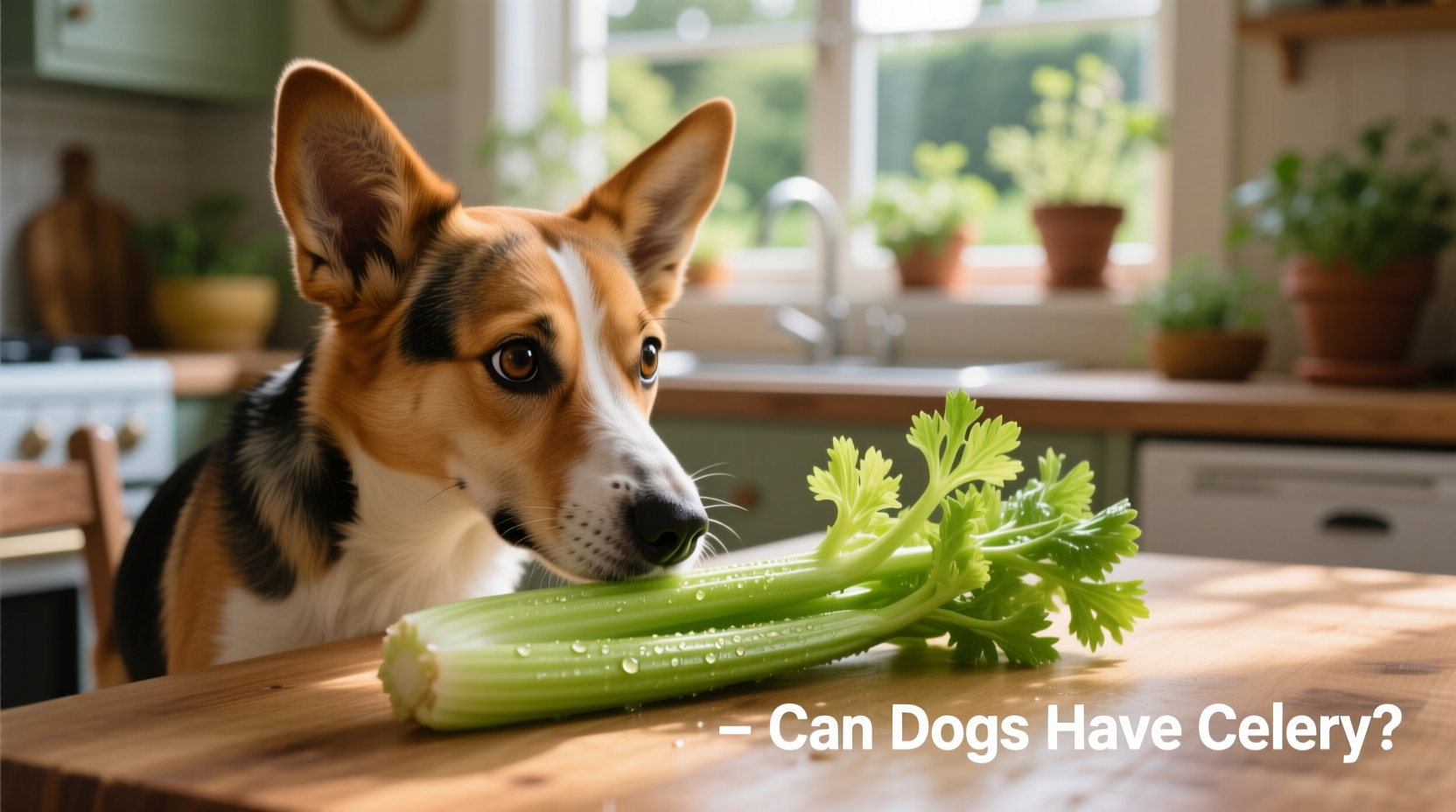As pet owners increasingly seek healthy treat alternatives, celery has emerged as a popular option for dogs. Understanding how to safely incorporate this vegetable into your dog's diet prevents common mistakes while maximizing nutritional benefits. This guide delivers evidence-based recommendations from veterinary nutrition experts to help you make informed decisions about feeding celery to your canine companion.
Why Celery Benefits Dogs When Prepared Correctly
Celery offers several nutritional advantages for dogs when served appropriately. According to the American Kennel Club, this vegetable contains essential vitamins and minerals while maintaining a low-calorie profile ideal for weight management. The crunchy texture also promotes dental health by helping remove plaque buildup during chewing.
Veterinary nutritionists at the Cummings School of Veterinary Medicine note that celery's high water content (95%) provides hydration benefits, particularly valuable during warmer months or for dogs reluctant to drink sufficient water. The dietary fiber supports digestive health when introduced gradually to avoid gastrointestinal upset.
| Nutrient | Amount per 100g | Benefit for Dogs |
|---|---|---|
| Vitamin A | 22 mcg | Supports vision and immune function |
| Vitamin K | 29.6 mcg | Essential for blood clotting |
| Potassium | 260 mg | Regulates fluid balance and nerve signals |
| Dietary Fiber | 1.6 g | Promotes healthy digestion |
Proper Preparation Prevents Common Risks
The stringy fibers in raw celery pose potential choking hazards and digestive challenges for dogs. The ASPCA Animal Poison Control Center recommends removing fibrous strings and cutting celery into small, manageable pieces appropriate for your dog's size. For smaller breeds or dogs with sensitive stomachs, lightly steaming celery improves digestibility while preserving most nutrients.
Always wash celery thoroughly to remove pesticide residues. Organic celery reduces chemical exposure, but proper cleaning remains essential. Never feed celery leaves to dogs, as they contain higher concentrations of psoralens which can cause photosensitivity in some canines.

Portion Guidelines Based on Dog Size
Following veterinary recommendations prevents overfeeding issues. The appropriate serving depends on your dog's weight and overall diet:
- Small dogs (under 20 lbs): 1-2 small pieces (½ inch) maximum
- Medium dogs (20-50 lbs): 2-3 pieces (1 inch) maximum
- Large dogs (50+ lbs): 3-4 pieces (1½ inches) maximum
Limit celery to no more than 10% of your dog's daily caloric intake. Introduce new foods gradually over 7-10 days while monitoring for adverse reactions. Discontinue immediately if vomiting, diarrhea, or excessive gas occurs.
When Celery Isn't Appropriate for Your Dog
Certain health conditions require avoiding celery entirely. Dogs with kidney disease should not consume celery due to its oxalate content, which can exacerbate urinary issues. Those with sensitive digestive systems may experience gas or loose stools even with small portions. Always consult your veterinarian before introducing new foods to dogs with chronic health conditions or those on prescription diets.
Healthy Vegetable Alternatives to Celery
If your dog doesn't tolerate celery well, several safe alternatives provide similar nutritional benefits:
- Cucumber slices (peeled for easier digestion)
- Carrot sticks (raw or steamed)
- Green beans (plain, cooked or raw)
- Zucchini chunks (cooked)
Remember that vegetables should supplement—not replace—your dog's complete and balanced diet. Treats of any kind should constitute no more than 10% of daily calories to maintain proper nutrition.
Frequently Asked Questions
Can puppies eat celery?
Puppies can consume small amounts of properly prepared celery after weaning, but their digestive systems are more sensitive. Introduce tiny portions (¼ inch pieces) gradually and monitor closely for any digestive upset. Consult your veterinarian before offering celery to puppies under 6 months old.
Is cooked celery better for dogs than raw?
Cooked celery (steamed or boiled without seasoning) is often easier for dogs to digest, especially for senior dogs or those with sensitive stomachs. Cooking breaks down tough fibers while preserving most nutrients. Raw celery provides more dental benefits through its crunchy texture but requires more careful preparation to remove stringy parts.
How often can I give my dog celery?
Veterinarians recommend offering celery no more than 2-3 times weekly as part of a varied treat rotation. Daily consumption increases the risk of digestive upset and potential nutrient imbalances. Always follow portion guidelines based on your dog's size and overall health status.
Can celery help with my dog's bad breath?
While celery's crunchy texture can help remove some plaque buildup, it's not a reliable solution for chronic bad breath. Persistent halitosis typically indicates underlying dental disease or other health issues requiring veterinary attention. Celery should complement—not replace—regular dental care including tooth brushing and professional cleanings.
What should I do if my dog ate too much celery?
Monitor your dog for signs of digestive distress including vomiting, diarrhea, or lethargy. Provide plenty of fresh water and withhold additional treats until symptoms resolve. Contact your veterinarian if symptoms persist beyond 24 hours or if your dog shows signs of choking or intestinal blockage such as repeated retching or abdominal pain.











 浙公网安备
33010002000092号
浙公网安备
33010002000092号 浙B2-20120091-4
浙B2-20120091-4